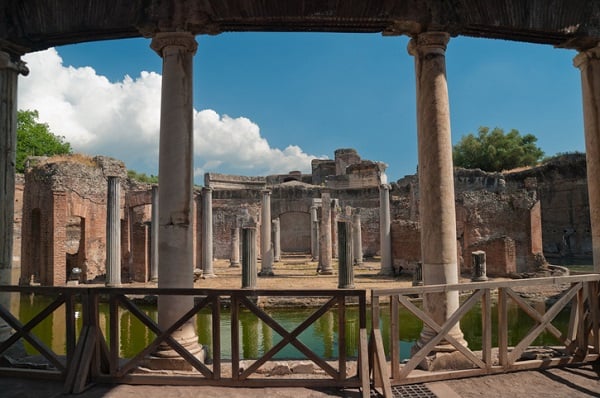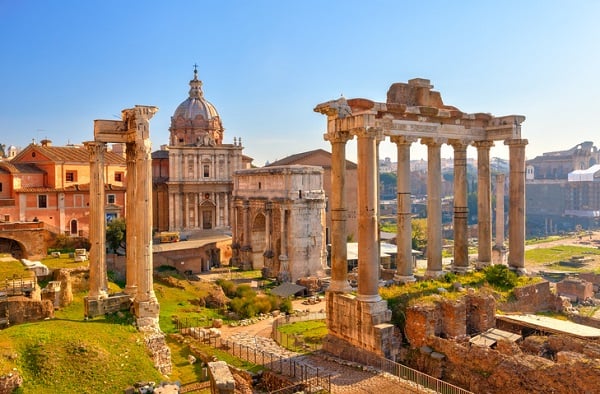

Communities around the world look to UNESCO (The United Nations Educational, Scientific, and Cultural Organization) to help protect their cultural legacies for future generations.
UNESCO carefully selects locations for its exclusive list of remarkable World Heritage Sites—places and structures that are safeguarded against demolition, development projects, and any other act that may threaten their integrity. Students studying abroad in Rome this year will be happy to hear that Italy has more World Heritage Sites than any other country in the world! And many of them are found within Rome.
From heavenly basilicas to ancient tombs, historical sites across the Eternal City offer students both a trip back in time and a unique glimpse into contemporary Italian culture. Read on to learn about the one-of-a-kind UNESCO World Heritage Sites you can visit while in Rome!
The Tivoli Villas: Explore Ancient Architecture While You Study in Italy
Located 18 miles east of Rome, the Tivoli Villas are UNESCO-protected architectural marvels exemplifying the Roman Empire’s love affair with opulence. These two very different luxury estates showcase how the ruling class displayed their wealth and power with over-the-top luxury residences.
The Villa Adriana was designed by Emperor Hadrian (also the man behind Hadrian’s Wall and the Temple of Venus), and features the state-of-the-art architectural trends of his time. A visit to this classical complex is a must-do for undergraduates who’ve chosen to study history in Italy.

Tivoli’s Villa D’Este is a brilliant Renaissance-era palace commissioned by Cardinal Ippolito II d’Este. Its gardens, fountains and water features were considered ground-breaking, and were copied throughout Europe. Villa D’Este was the perfect refuge for the cardinal after he was exiled from Rome, and after years of falling in and out of disrepair, it is now protected as a state-run museum.
Cerveteri’s Darkly Fascinating Necropoli della Banditaccia
From “necro” (dead) and “polis” (city), this Etruscan marvel is an ancient cemetery dating back to the 9th century B.C., with wall-paintings depicting the builders’ ancient daily lives. Over 400,000 tombs are housed here in characteristic mounds; kind of like ancient, cryptic Hobbit holes.
It’s another UNESCO heritage site located within the same Italian province as John Cabot’s campus. While students stroll through acres of the Necropoli’s rustic landscape, ancient stone symbols help them decode clues about the people encased within—from their approximate dates of death to their social status and gender. For example, art history studies have revealed how the cemetery’s most recent tombs (3rd century BC) are distinctly fashioned into pointed “houses of the dead” for women, and cylindrical, phallic-shapes for men.

A Great Reason to Study History in Italy: The Roman Forum
The Forum is the foundational site of Rome’s earliest government buildings. It has expanded and developed over centuries of influence by leaders like Julius Caesar and Emperor Augustus. From the Arch of Constantine to the Basilica Iulia, the Forum is now home to over a dozen iconic ancient Roman sites.
Modern history and political science students in classrooms around the world encounter the Forum when studying civilization’s earliest forms of democracy. But when you study history in Rome, the Forum becomes part of your daily life. It’s Rome’s main plaza; the centuries-old centerpiece of Italy’s cultural landscape. The Forum’s spectacular structures are ever-present, infusing historical resonance into the atmosphere that surrounds you. It’s well worth taking a closer look!
Which iconic sites would you like to visit as you study in Italy?
Contact JCU to learn more!




